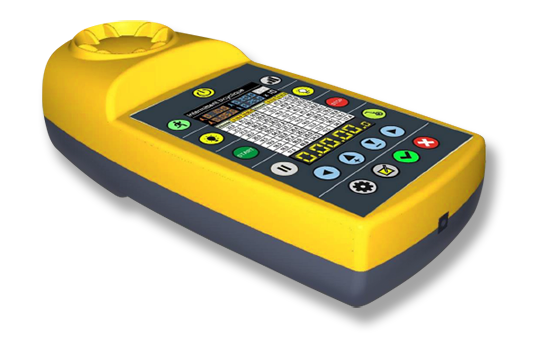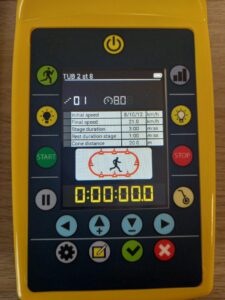The TUB II test
The TUB II test short for Test de la Vitesse Maximale Aérobie Utilitaire à l’Effort Intermittent de 30 secondes, is an essential tool for assessing an individual’s Maximum Aerobic Speed (MAS), along with other well-known tests such as the Vameval test and the 45-15 test. These tests are a must for any fitness trainer or sports coach, as knowledge of each athlete’s MVA is crucial to the effective individualization of their training.
The main aim of VMA assessment is to enable the fitness trainer to tailor training programs to the specific physiological capacities of each athlete. By understanding an individual’s maximum capacity to use oxygen during high-intensity exercise, the trainer can design training sessions that precisely target each athlete’s areas for improvement, thus promoting their athletic progression.
What’s more, knowing an athlete’s VMA also helps minimize the risk of injury. By adapting training intensities and volumes to individual fitness levels and capacities, the trainer can avoid overload and overexertion, two major risk factors in the development of sports injuries.
It is also crucial to take into account the specific characteristics of each athlete when assessing VMA. Factors such as age, fitness level, gender and ability to push oneself to the limit must be taken into account to obtain an accurate, individualized assessment of VMA. For example, training programs for older or less experienced athletes may require different adjustments than those for young elite athletes.
1.Materials required for the TUB II test
- A track at least 200 metres long
- Markers spaced at 20-metre intervals (have an odometer available)
- Soundtrack(sportbeeper)
2. Procedure for the TUB II test
The test can start at 8 or 12 km/h. Each level lasts 3 minutes, and participants have one minute to recover between levels. If the test starts at 8 km/h, the speed is increased by 2 km/h up to 12 km/h and then by 1 km/h. If the test starts at 12 km/h, the speed is increased only once by 2 km/h. Thus, from 14 km/h onwards, the speed increases by 1 km/h at each step after the one-minute recovery period.
To validate a step, each athlete must be at stud height when the beep sounds.
The test is over when the runner is no longer at stud height at the beep, or if he stops. A delay of several metres at one marker may be allowed if it is immediately made up at the next (especially in the first stages, as the higher you go in the stages, the more demanding you have to be).
The VMA corresponds to the last stop completed + the time taken in the next stop.
Note: In cold weather, you can add a warm-up, although the slow starting speed is normally used as a warm-up.
3.Advantages/Disadvantages of the TUB II test
The TUB II test offers a number of significant advantages, making it an attractive assessment tool for fitness trainers and sports coaches. First of all, it’s relatively easy to set up. All that’s needed is to place studs every 20 meters and follow the test soundtrack, making it a practical and easy option to organize in the field. What’s more, its design enables a large number of participants to be assessed at the same time, which is particularly useful in an environment where several athletes need to be assessed simultaneously, as in a sports team.
However, despite its advantages, the TUB II test also has disadvantages that are important to consider. Firstly, its duration can be considerable, especially if a large number of participants are to be assessed. This can represent a logistical and time challenge for fitness trainers and coaches, particularly in a training setting where time is limited.
What’s more, for a more accurate assessment of the relationship between speed and heart rate, the use of a heart rate monitor is often recommended. This adds another layer of logistical complexity, as it is necessary to ensure that each participant has the necessary equipment and that it functions correctly during the test.
Finally, a notable drawback of the TUB II test is that it requires an ability to mentally challenge oneself on the part of participants. The high-intensity intervals demand maximum commitment, which can be physically and mentally taxing for some individuals. This psychological dimension of the test can affect performance and assessment accuracy, particularly in less experienced or less motivated athletes.
To perform the TUB II test with Sportbeeper Pro, simply go to the testing menu, select the TUB II test and press start to start the test.



